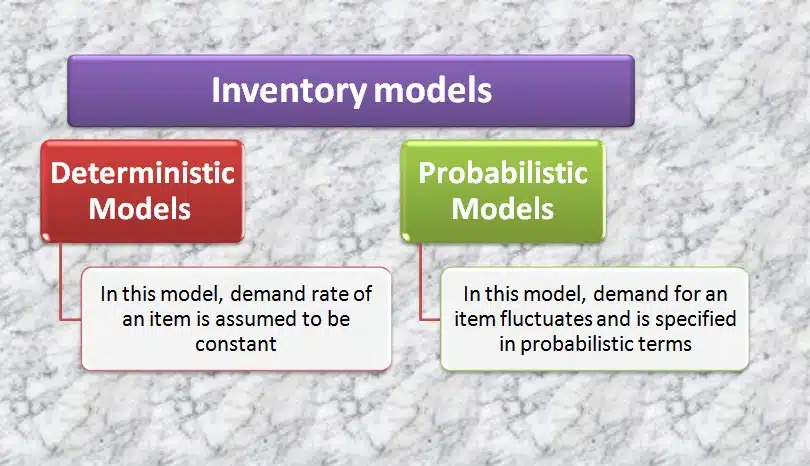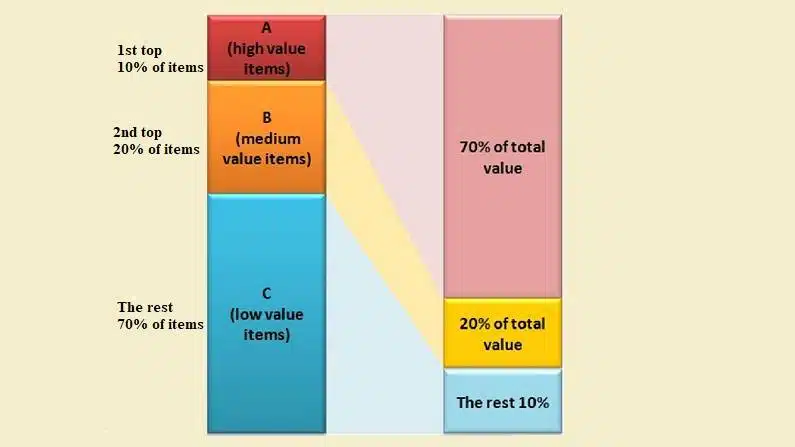
Deterministic and Probabilistic models in Inventory:
An inventory system can be modeled quantitatively based on demand patterns. They are,
- Deterministic inventory models in which the demand rate of an item is assumed to be constant.
- Probabilistic inventory models where the demand for an item fluctuates and is specified in probabilistic terms.
1. Deterministic Models:
The order quantity (how much) and reorder point (when) are determined deterministically by minimizing the total inventory cost that can be expressed as a function of these two variables. The purchasing cost becomes large when the order size is large. The ordering cost represents the fixed charge incurred when an order is placed. Thus, frequent smaller orders will result in a higher ordering cost than less frequent larger orders. The holding cost, which represents the costs of carrying inventory in stock (e.g, interest on invested capital, storage, handling, depreciation, and maintenance), normally increases with the level of inventory.
Single-item static (EOQ) model with no shortages: This is the best known and most fundamental inventory model, which is applicable when the demand for an item has constant, or nearly constant, rate and when the entire quantity ordered arrives in inventory at on point in time.
2. Probabilistic Models:
In practice, all demand patterns are uncertain and hence a large number of inventory systems cannot be modelled using deterministic approaches. In probabilistic models, demands are described by probability distributions based on which inventory is decided.
Single-period inventory model with probabilistic demand: It is necessary to clarify the term single period. This term refers to the situation where the inventory is perishable and demand for that particular inventory exists only for the period at which it is ordered (or) procured. Newspaper selling is such an example. The newspaper ordered for today will not be sold at the same price tomorrow. Fashion selling is another example. Spring-summer designs will not sell during the autumn-winter season.
(Source – Various books of college library)
Copyrighted Material © 2019 - 2024 Prinsli.com - All rights reserved
All content on this website is copyrighted. It is prohibited to copy, publish or distribute the content and images of this website through any website, book, newspaper, software, videos, YouTube Channel or any other medium without written permission. You are not authorized to alter, obscure or remove any proprietary information, copyright or logo from this Website in any way. If any of these rules are violated, it will be strongly protested and legal action will be taken.



Be the first to comment